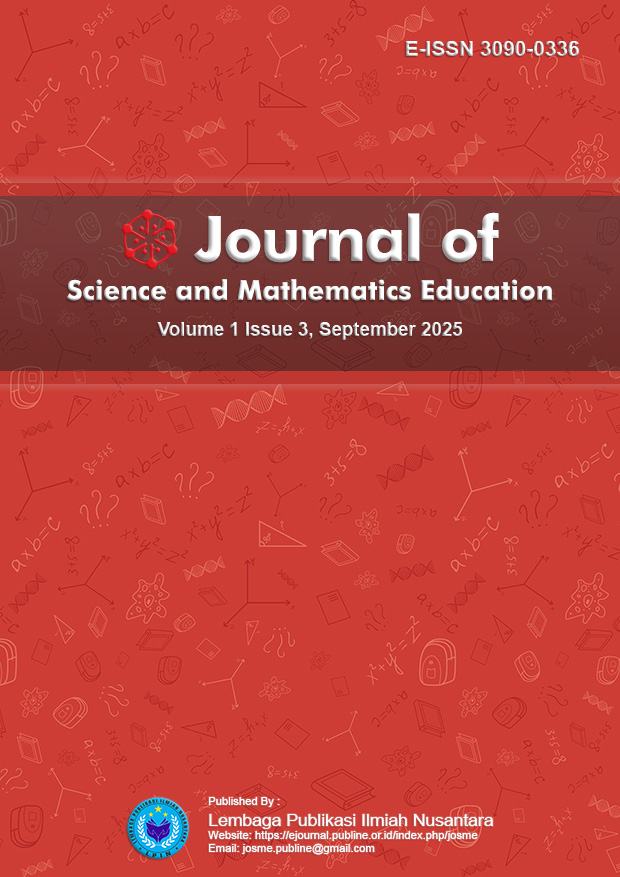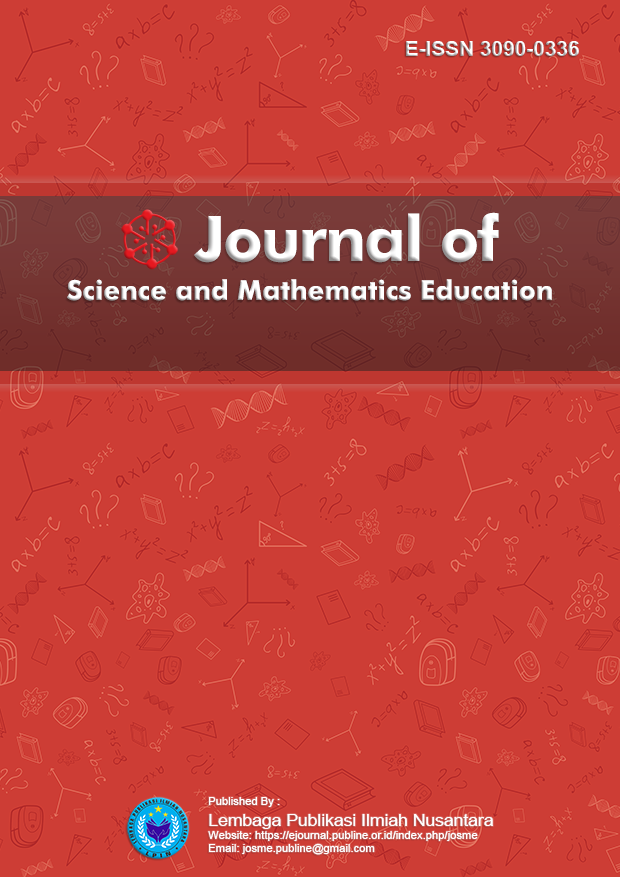Development and Implementation of Android-Based Interactive E-Modules to Improve Mathematical Problem-Solving Skills at Secondary Schools Hamid Khan Pulau Pinang Malaysia
DOI:
https://doi.org/10.70716/josme.v1i3.238Keywords:
Interactive E-Modules, Android, Mathematics, Problem-Solving, Digital LearningAbstract
This study aims to develop and implement Android-based interactive e-modules to enhance mathematical problem-solving skills among students at Secondary Schools Hamid Khan, Pulau Pinang, Malaysia. The main issue in mathematics learning at the school lies in students’ low engagement and the lack of interactive learning media aligned with technological developments. This research adopts a Research and Development (R&D) approach using the ADDIE model (Analysis, Design, Development, Implementation, Evaluation). The e-modules were developed with interactive features such as tutorial videos, adaptive exercises, and automated assessments. The study involved 60 upper secondary students divided into experimental and control groups. Data were collected through mathematical problem-solving tests, student response questionnaires, and classroom observation. The results indicated a significant improvement in the mathematical problem-solving abilities of students in the experimental group compared to the control group. Student responses toward the e-modules were highly positive, with the majority expressing that the modules helped them understand mathematical concepts more enjoyably and deeply. The study concludes that Android-based interactive e-modules are effective in enhancing the quality of mathematics learning and can serve as an innovative alternative in digital education at the secondary school level.
Downloads
References
Alemdag, E., Cagiltay, K., & Janßen, D. (2018). A systematic review of interaction in e-learning environments. Computers & Education, 122, 54–67.
Baroody, A. J., Feil, Y., & Johnson, A. R. (2018). An alternative reconceptualization of procedural and conceptual knowledge. Journal for Research in Mathematics Education, 49(4), 387–398.
Branch, R. M. (2009). Instructional design: The ADDIE approach. Springer.
Burden, K., & Kearney, M. (2017). Investigating and critiquing teacher educators’ mobile learning practices. Interactive Technology and Smart Education, 14(2), 110–125.
Cai, J., Hwang, S., Jiang, C., & Silber, S. (2020). Problem-posing research in mathematics education: Some questions we have. Journal for Research in Mathematics Education, 51(3), 254–264.
Cheung, A. C., & Slavin, R. E. (2013). The effectiveness of educational technology applications for enhancing mathematics achievement. Educational Research Review, 9, 88–113.
Choi, H. J., & Johnson, S. D. (2005). The effect of context-based video instruction on learning and motivation in online courses. American Journal of Distance Education, 19(4), 215–227.
Crompton, H., & Burke, D. (2018). The use of mobile learning in higher education: A systematic review. Computers & Education, 123, 53–64.
Gresalfi, M., Barnes, J., & Cross, D. (2012). Lost in transition: Learning to teach mathematics for conceptual understanding. Journal of Mathematics Teacher Education, 15, 1–16.
Hilton, J. (2016). Open educational resources and college textbook choices: A review of research on efficacy and perceptions. Educational Technology Research and Development, 64(4), 573–590.
Hsu, C. K., Wang, T. H., & Wang, K. H. (2013). Improving learning achievement in problem-solving through an interactive multimedia learning system. Interactive Learning Environments, 21(1), 3–17.
Hwang, G. J., & Chang, H. F. (2011). A formative assessment-based mobile learning approach to improving the learning attitudes and achievements of students. Computers & Education, 56(4), 1023–1031.
Ifenthaler, D., & Yau, J. Y. (2020). Utilising learning analytics for study success: Reflections on current empirical findings. Research and Practice in Technology Enhanced Learning, 15(1), 1–13.
Jonassen, D. H. (2011). Learning to solve problems: A handbook for designing problem-solving learning environments. Routledge.
Khalil, H., & Ebner, M. (2017). Clustering patterns of engagement in massive open online courses (MOOCs): An empirical analysis. Interactive Technology and Smart Education, 14(3), 166–184.
Mayer, R. E. (2009). Multimedia learning (2nd ed.). Cambridge University Press.
Molenda, M. (2003). In search of the elusive ADDIE model. Performance Improvement, 42(5), 34–36.
Papadakis, S., Kalogiannakis, M., & Zaranis, N. (2018). Educational apps from the Android Google Play for Greek preschoolers: A systematic review. Computers & Education, 116, 139–160.
Park, Y., Nam, M., & Cha, S. B. (2019). University students’ behavioral intention to use mobile learning: Evaluating the technology acceptance model. British Journal of Educational Technology, 50(2), 592–605.
Polya, G. (2004). How to solve it: A new aspect of mathematical method. Princeton University Press.
Riconscente, M. M. (2013). Results from a controlled study of the iPad fractions game Motion Math. Games and Culture, 8(4), 186–214.
Schoenfeld, A. H. (2013). Reflections on problem solving theory and practice. The Mathematics Enthusiast, 10(1), 9–34.
Sung, Y. T., Chang, K. E., & Liu, T. C. (2016). The effects of integrating mobile devices with teaching and learning on students' learning performance. Computers & Education, 94, 252–275.
Tan, Y. S. M., Cheah, M., & Lee, S. C. (2020). Educational technology adoption in Malaysia: Trends, challenges, and implications. Education and Information Technologies, 25(4), 3569–3594.
Yen, T. S., Idris, N., & Yusof, Y. M. (2021). A review of mathematics education and digital learning in Southeast Asia. International Journal of Emerging Technologies in Learning (iJET), 16(5), 44–61.
Downloads
Published
How to Cite
Issue
Section
License
Copyright (c) 2025 Eka Khairunnisa, Fitria Suryaningsih

This work is licensed under a Creative Commons Attribution-ShareAlike 4.0 International License.











